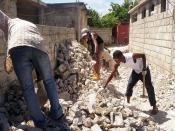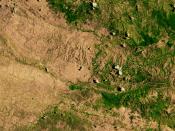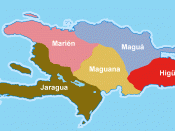Haiti covers the western third of the island of Hispaniola. Haiti shares the island with the Dominican Republic. The shape of Haiti has been compared to a lobster's claw, with the upper pincer pointing toward Cuba and the lower longer claw pointing toward Jamaica.
It is the most greatly populated country in Latin America and has the lowest per capita income. About half the people are unemployed and three quarters are living in the most severe poverty. Some of the problems that Haiti still face today are political instability, repression, and lack of medical care. Because of this, an average Haitian only lives about 33 years.
About 95% of the people are descendants of African slaves. French is the official language of Haiti, although majority of the people speak Haitian Creole, a French dialect. Roman Catholicism is their religion, but African gods are still worshiped and voodoo is practiced.
Haiti's government is republic and only people who are 21 and older can vote.
Agriculture is the most economic activity in Haiti. Some of the crops they grow are cassava, rice, sugarcane, sorghum, yams, corn, and plantains. Most Haitians own and farm land. Haiti's major export is coffee and major exports are cotton, sugar, sisal, bauxite, and essences. The United States is the country's leading trading partner. Haiti is known for having a tropical climate and mild temperatures. Deadly hurricanes hit the island between June and October. The most important seaports in the island are Les Cayes and Saint-Marc.
Haiti's history goes back to 1492, when Christopher Columbus arrived at Hispanola. There he discovered gold and other goods. When Spain tried to take over in 1697, they failed and French took over. France named the new colony, Saint Dominque. They brought slaves and they developed big plantations.
Haiti covers...


